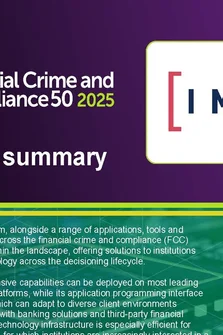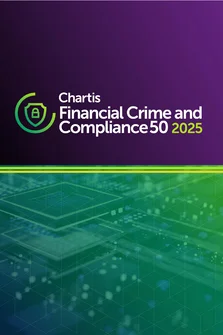<p>In the past, many firms felt powerless to prevent financial crime and simply wrote it off as the cost of doing business. In the last two decades, however, the combination of greater regulatory pressure and the increased costs of financial crime to firms have led to financial crime management becoming a much higher priority for firms.</p>
<p>In particular, regulators have put increased pressure on firms to do more to prevent terrorism financing, money laundering, corruption, and tax evasion. As these requirements have become stricter and the volume of transactions has increased, it has become ever more difficult for firms’ financial crime management systems to meet these requirements. The cost of failure has gone up, through higher regulatory fines and increased public scrutiny leading to greater reputational risk.</p>
<p>Firms need to adapt to this new world. In the past, they had focused on processing a relatively small number of transactions, on a batch basis, and accounts could be fairly easily traced. However, the rise of mobile and online banking has raised the volume of transactions, the speed at which they take place, and the ease of anonymity. These factors mean that firms need new approaches and technology systems for their anti-money laundering, anti-corruption, anti-terrorism financing, economic sanctions, and tax evasion programs.</p>
<p>The widening of regulatory scope has also increased the volume of transactions and accounts that need to be screened. This will place increased pressure on resources in organizations that rely on manual review and workflow processes, creating much higher costs, much lower efficiency, and greater operational risk. To process greater flows of information, firms will need technology solutions that have been specifically designed to meet current and future challenges of screening processes, providing the right balance of feature sophistication and high-volume processing ability.</p>
<p>As financial crime techniques evolve rapidly, state-of-the-art detection techniques with sophisticated filtering are necessary, with powerful, scalable screening abilities to enable the processing speed that operations require. Firms also want to avoid overwhelming volumes alerts generated by increased screening volumes. To meet the new filtering volumes, refined and flexible tuning of rules is required to minimize false positives and maintain manageable alert rates. Solutions also need a rapid ‘production mode’ to eliminate false alerts quickly, while providing deeper investigation tools for potential true alerts. Automation of predictable steps should be considered, such as decision reapplication or routing alerts directly to the most appropriate reviewer.</p>
<p>This often means focusing on best-of-breed solutions, rather than ‘one-stop-shops’. While many firms want to improve their overall financial crime systems, they know from experience that broad implementations are costly and take time. Where firms have a specific need for improved screening, a specialized screening tool, with focused development of real-time scalable capabilities, may be preferable to a one-stop-shop vendor with less sophisticated screening capabilities.</p>
<p>This report covers the technology capabilities and systems that firms need to adapt to this changing environment, with a focus on watch-list filtering systems. The report covers new functionalities that firms need to implement to keep pace with technology changes and regulatory requirements, including real-time capabilities, risk-based approaches, and the ability to increase scale. This report also covers practices and technology solutions available from FircoSoft, a provider of watch-list filtering solutions. Chartis believes FircoSoft to be one of the leading vendors in the financial crime management marketplace.</p>
Only users who have a paid subscription or are part of a corporate subscription are able to print or copy content.
To access these options, along with all other subscription benefits, please contact info@risk.net or view our subscription options here: http://subscriptions.risk.net/subscribe
You are currently unable to print this content. Please contact info@chartis-research.com to find out more.
You are currently unable to copy this content. Please contact info@chartis-research.com to find out more.
Copyright Infopro Digital Limited. All rights reserved.
As outlined in our terms and conditions, https://www.infopro-digital.com/terms-and-conditions/subscriptions/ (point 2.4), printing is limited to a single copy.
If you would like to purchase additional rights please email info@chartis-research.com
Copyright Infopro Digital Limited. All rights reserved.
You may share this content using our article tools. As outlined in our terms and conditions, https://www.infopro-digital.com/terms-and-conditions/subscriptions/ (clause 2.4), an Authorised User may only make one copy of the materials for their own personal use. You must also comply with the restrictions in clause 2.5.
If you would like to purchase additional rights please email info@chartis-research.com


